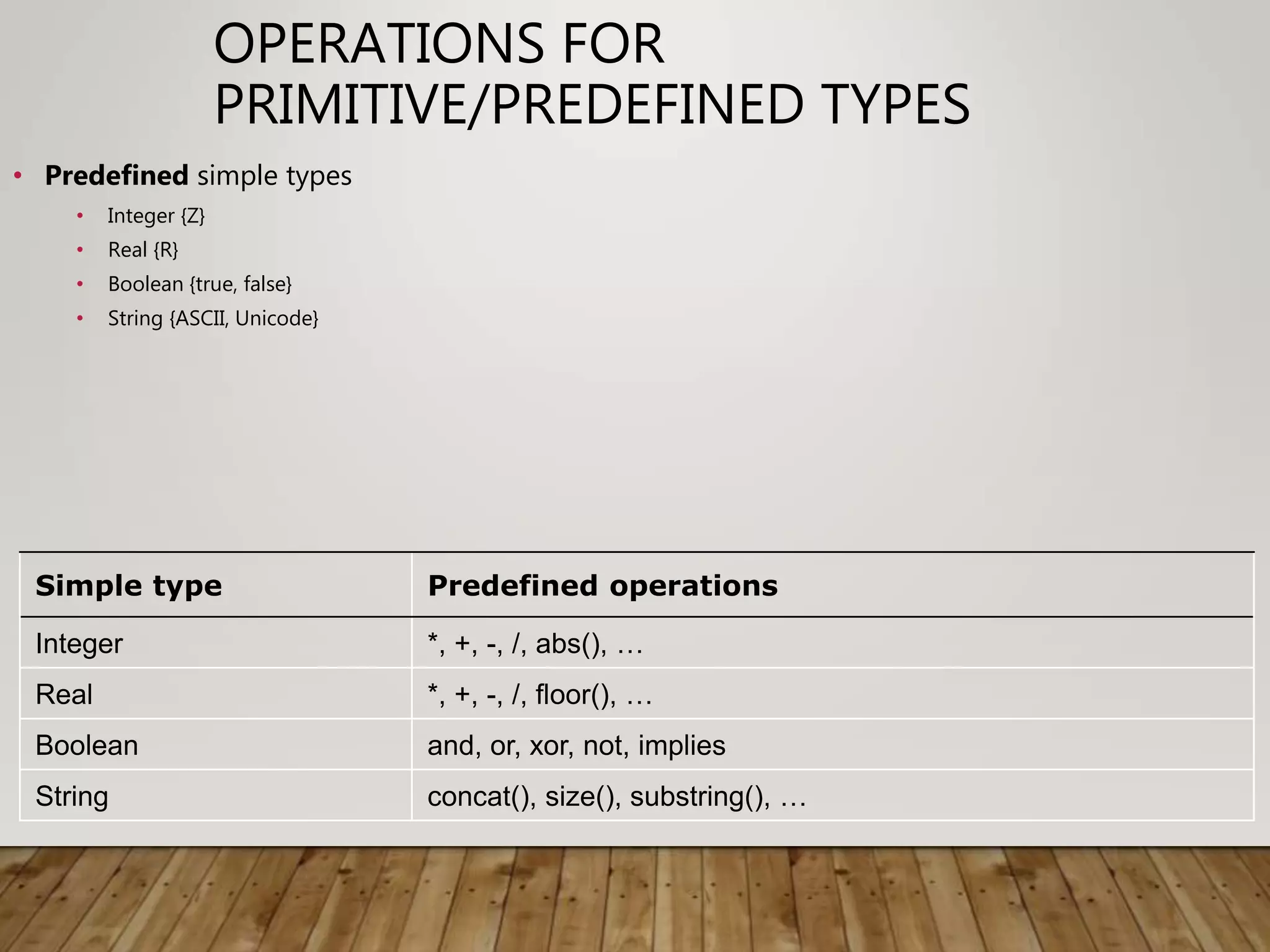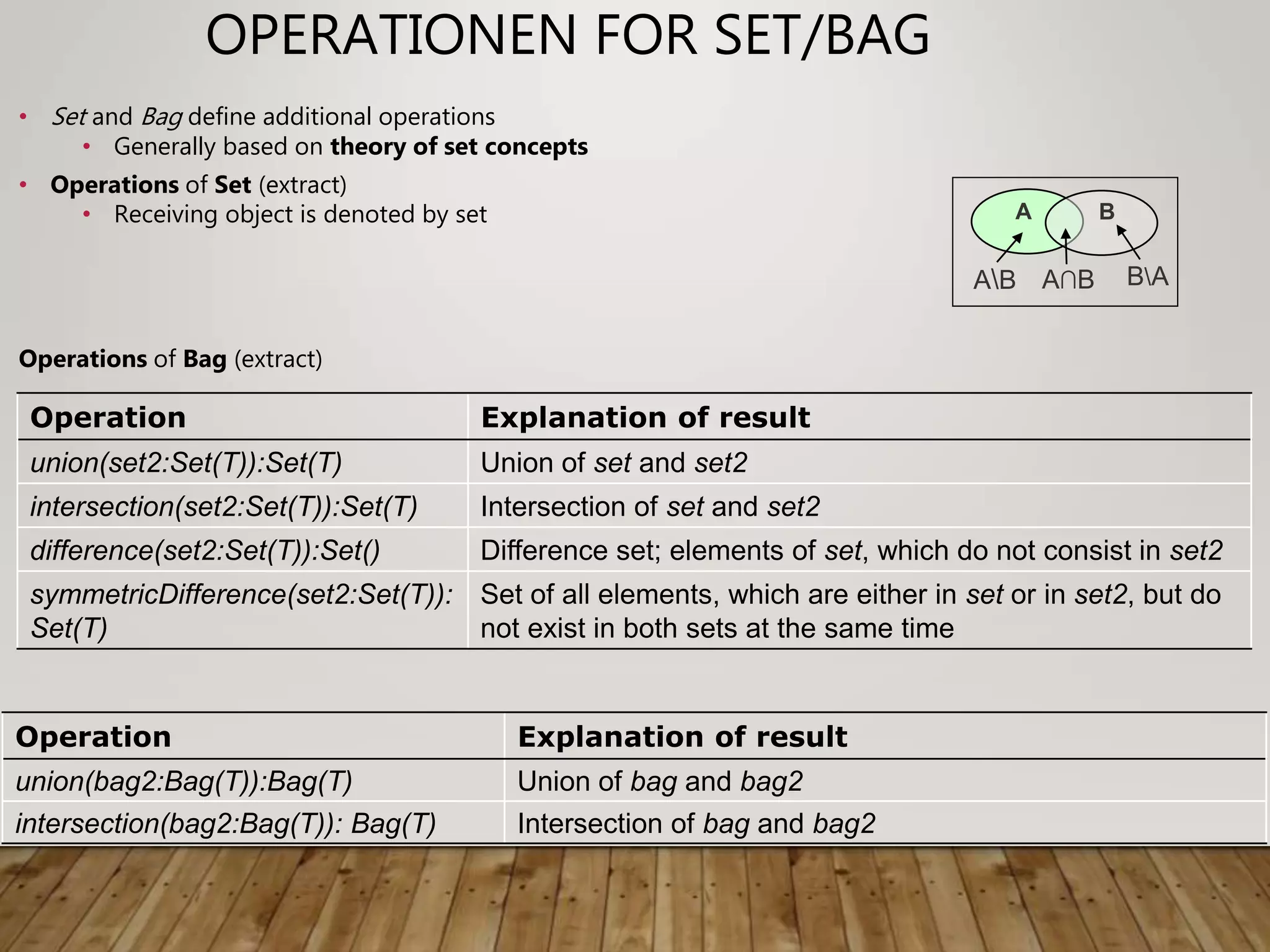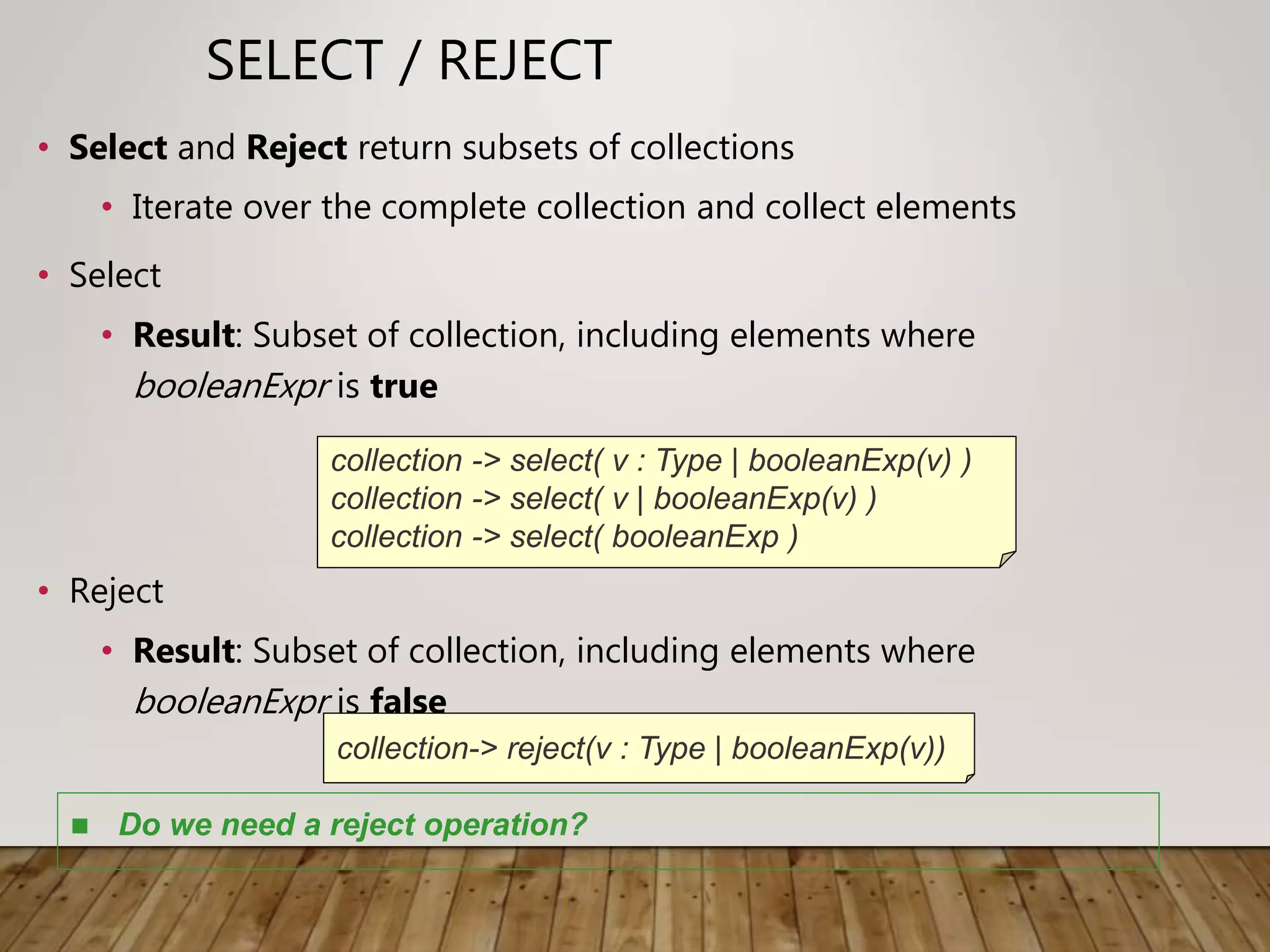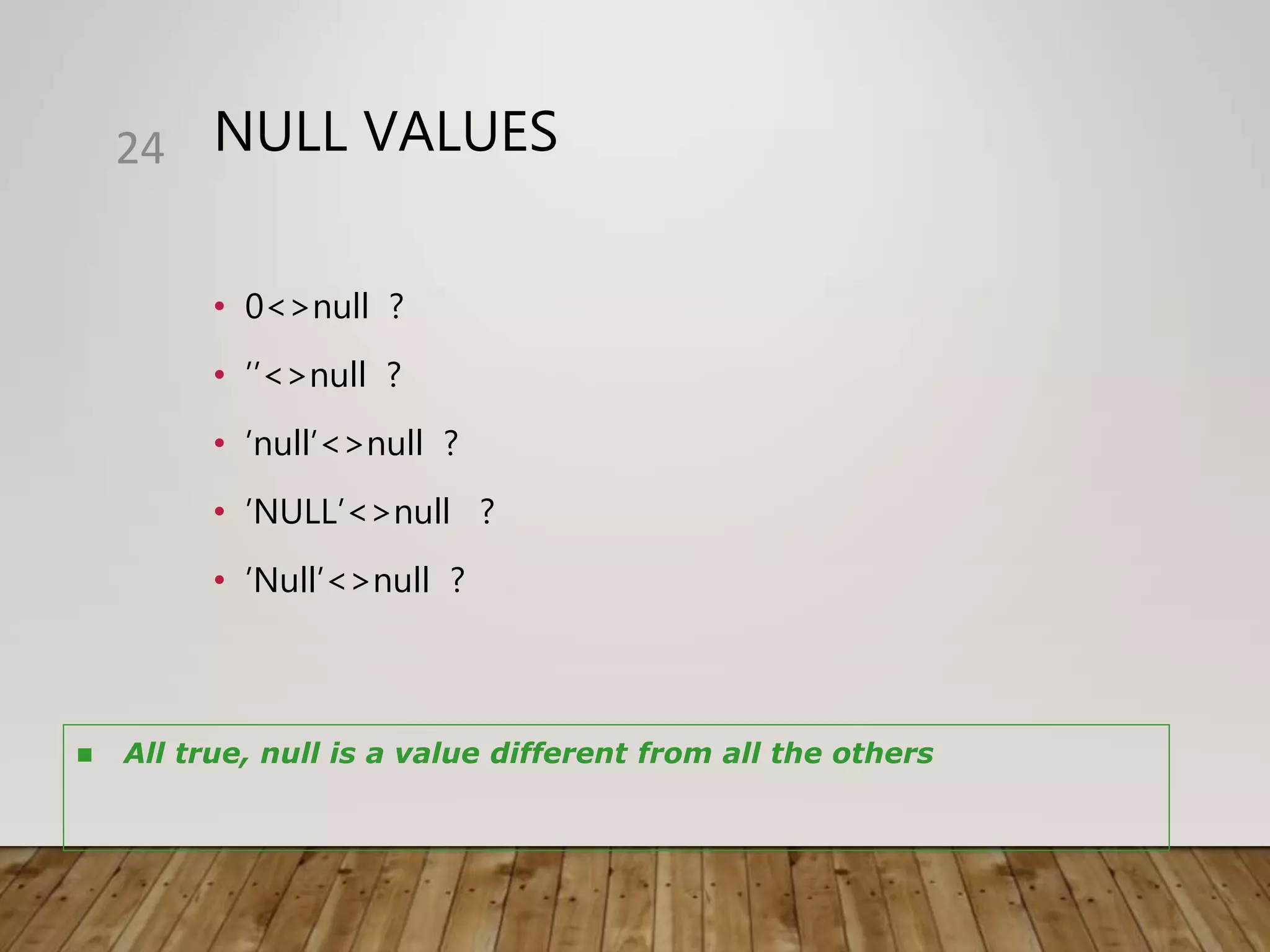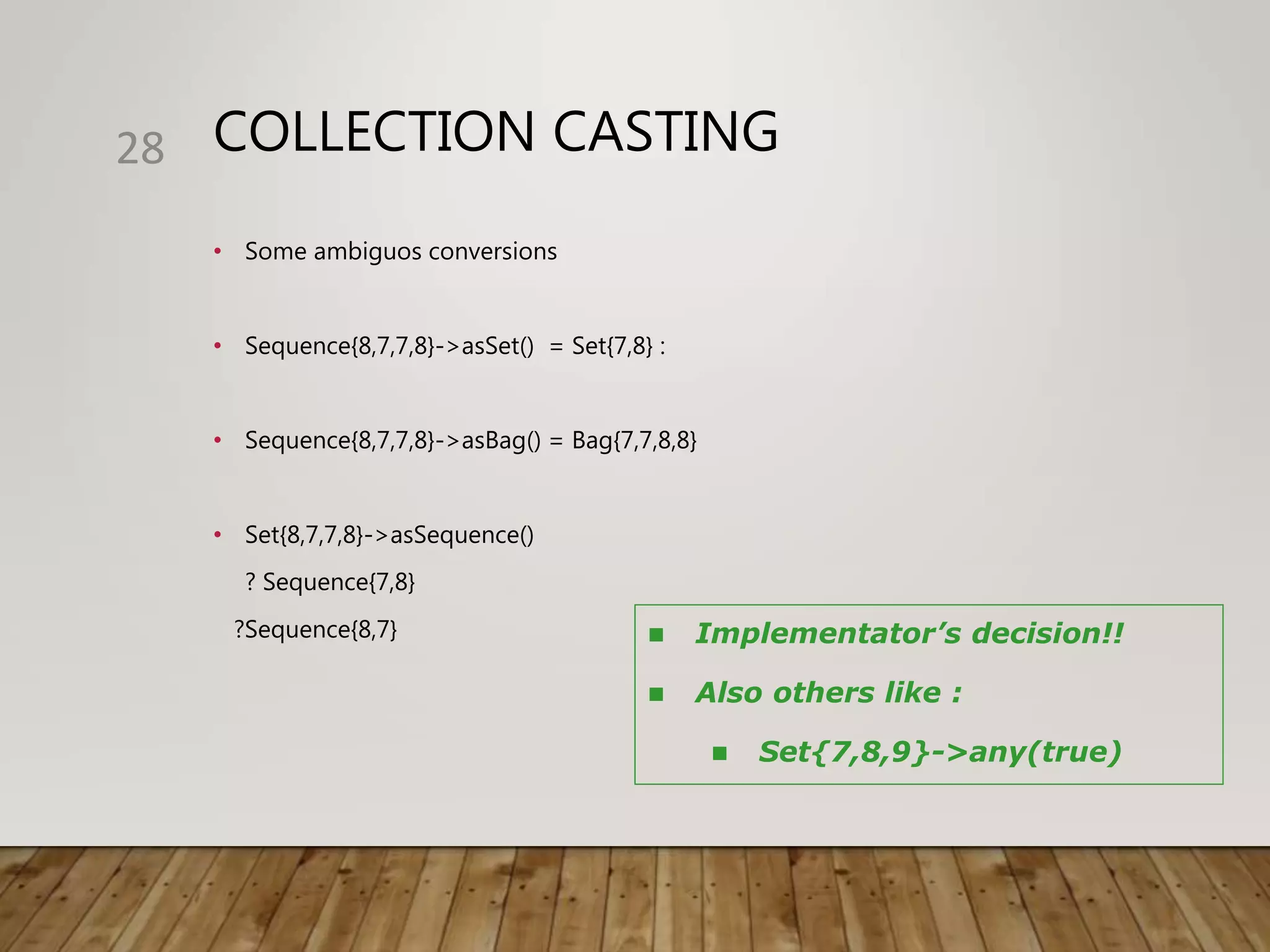This document provides an overview of OCL syntax for navigating objects and collections. It discusses how to access attributes of an object using "self.attribute" and navigate to the opposite end of an association using role names. It provides examples of navigating from a Company context to retrieve employees and from a Person context to retrieve their employer. It also discusses OCL types like PrimitiveType, CollectionType, and operations available on collections like select, reject, collect, iterate, and examples of using these operations.






